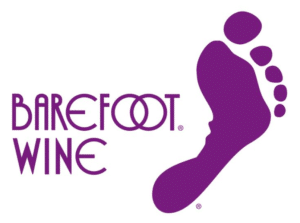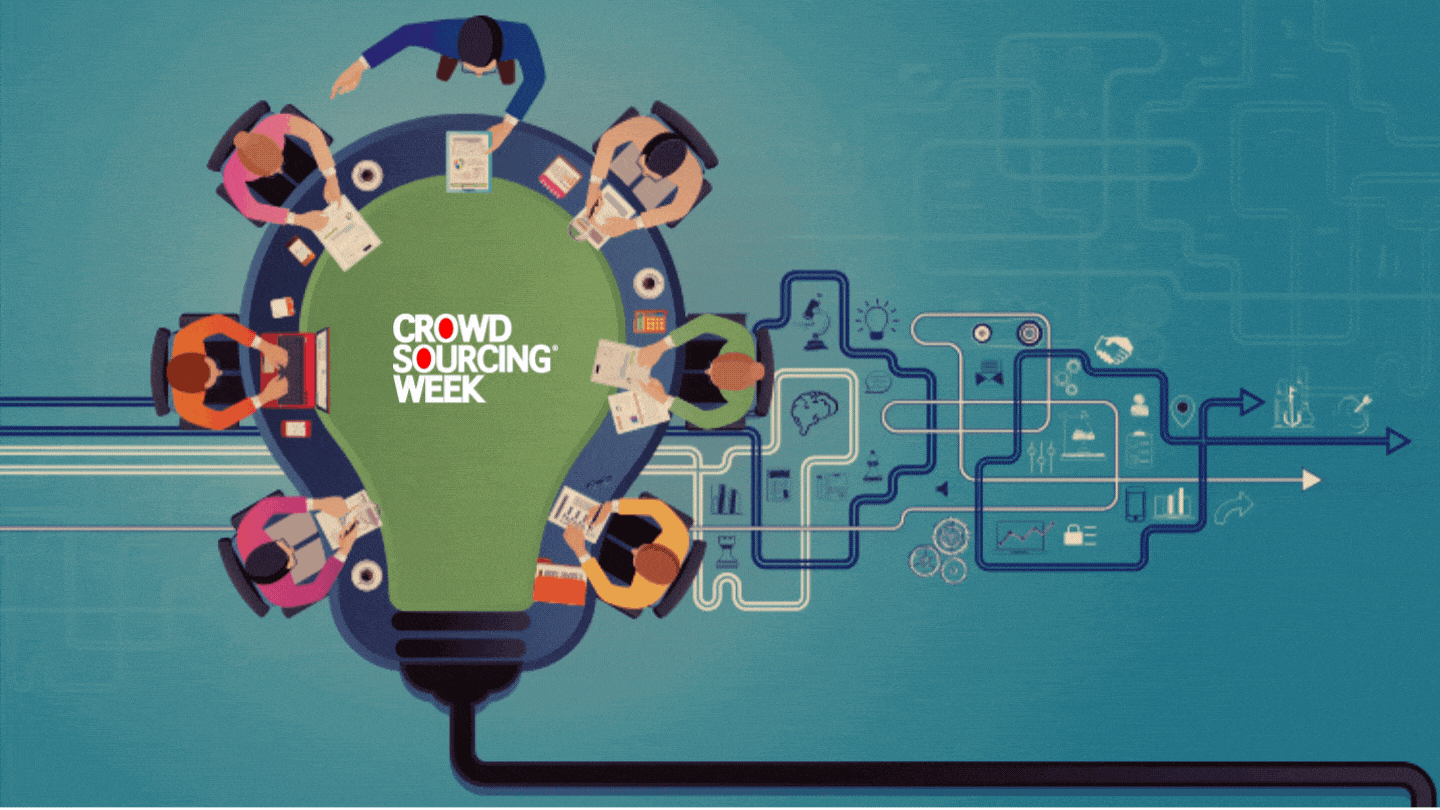It’s possible to find different answers to this question of ‘What is open innovation?’ Though the majority agree it is a process that goes beyond an organization’s own R&D resources and enlists the support of outside help for innovation ideas to resolve challenging issues, develop new products, or innovate on a wider scale that could ultimately disrupt entire business sectors. Some people also say open innovation has existed for less than 20 years since Henry Chesbrough coined the phrase in 2003. However, let’s not overlook that even a simple Suggestion Box in a staff canteen allows any employee to suggest ideas or offer observations related to other departments and functions beyond their own. What we address here is open innovation in the age of digital mass communication. We each have opportunities to instantly communicate with people all around the world, and access more information than we would have ever imagined just a few years ago.
High levels of personal connectivity and access to knowledge has already transformed what were traditional ways of doing things in numerous industries and business sectors. The availability, in fact the overload, of so much information caused many organizations to steer away from a hierarchical structure, where information was passed to a limited number of people to review it and make decisions. What replaced it is often a flatter structure of people working in self-managing teams, with information gathering, analysis and dissemination handled by more people. More recently, this now includes automated machine learning applied to mass data, driven by artificial intelligence.
Breaking down traditional departmental silo-behaviors within organizations is often a first step towards open innovation. The UK supermarket chain Waitrose has gathered 4,000 innovation ideas from employees, implemented 13% of them, and raised customer satisfaction levels while saving money. An idea to ask customers if they want a receipt rather than automatically handing them out started saving £450,000 a year in reduced paper. A logical extension of this is to welcome input from customers, suppliers and same sector experts, who are familiar with your business and its products. To then gather transferable input from experts in other business and industry sectors, and also involve researchers, academics and entrepreneurs, takes idea and innovation generation much further than the limitations of the classic, secretive R&D closed innovation model.
Types of Open Innovation
We can classify open innovation according to four distinctions of who is asked to take part.
Intracompany
This describes open innovation efforts inside an organization, generating input to R&D from multiple departments, and perhaps ultimately bringing together resources as cross-department teams to develop the better ones.
 Barefoot Wine is the world’s top wine brand, and in its early years as a bootstrapping startup its founders learned to rely on crowdsourcing what it needed rather than paying for it commercially. An issue with gaining its first retail distribution deals was that it was frequently placed on floor-level shelves rather than at eye-level. At an all-staff meeting it was a person in their accounts team who suggested using their barefoot logo as floor tiles to lead shoppers from store entrances to their products. And thus a marketing innovation idea was created.
Barefoot Wine is the world’s top wine brand, and in its early years as a bootstrapping startup its founders learned to rely on crowdsourcing what it needed rather than paying for it commercially. An issue with gaining its first retail distribution deals was that it was frequently placed on floor-level shelves rather than at eye-level. At an all-staff meeting it was a person in their accounts team who suggested using their barefoot logo as floor tiles to lead shoppers from store entrances to their products. And thus a marketing innovation idea was created.
A leading UK-based open innovation/idea management platform, Wazoku, tries to claim intracompany activity is the only true path of open innovations, and anything involving input from external sources is generic crowdsourcing. However, they appear to be alone in this definition.
2. For experts
Open innovation programmes and projects frequently involve people from outside the organization who possess relevant experience and knowledge to provide qualified input. There are several open innovation platforms that have networks of solution providers. One or more of them may be able to provide an organization with access to a pre-vetted crowd of people who fit a set of qualifying criteria.
An organization may consider that its customers and suppliers have sufficient product knowledge to be considered experts, and recruit some to be involved in determining future developments. The role of customers of and suppliers to rivals can also be considered to gain wider insights.
Experts can also include relevant trade bodies, members of organisations for different professional disciplines, and researchers and academics. An organisation may already have a database of such people, or could reach out through various channels to recruit willing participants in a specialist crowd.
3. A public challenge
This form of open innovation invites people from outside an organization to take part, regardless of their experience, knowledge or reputation, often through the form of a monetary prize challenge. Again, this is not a new technique. Prize challenges led to tinned food for Napoleon to feed his troops while they were campaigning, non-ivory billiard balls, and precision timekeeping instruments for accurate navigation by ships around the globe. The winner of this last challenge was a carpenter by trade, not a watchmaker.
The scope of response that can be generated by a prize challenge means they need to be carefully structured. The challenge to which a solution is being sought must be set out clearly; the type of response that is required – which could range from outline innovation ideas to working prototypes – must be equally clear. The scale of the prize and the response time allowed should reflect the complexity, or simplicity, of the challenge. Larger challenges can be broken down to a series of smaller ones, perhaps targeted at different types of solution providers. It will also help solution providers to know who will judge the challenge entries, and against what criteria. Platforms including HeroX can provide all the assistance that may be required to create a prize challenge.
NASA is a regular user of open innovation prize challenges and has set up its own NASA Solve program. Open innovation can also be used as a recruitment device, and in addition to monetary prizes NASA may also offer challenge entrants internship opportunities.
4. Intercompany
Open innovation can take place between any number of companies. The perfect example of this is a business accelerator hub. One or a number of corporations, and venture capital funds, can support a hub which attracts a range of entrepreneurs and startup businesses with offers of shared workspace, mentoring and early stage funding. They can also provide introductions to commercial partners or potential customers that the startups and entrepreneurs might otherwise only dream of. Competition for a place in an accelerator can be fierce, and they are often required to trade a minority stake of 5% to 8% equity. In return, the corporate and VC backers have access to the latest ideas, initiatives, talent and seed investment opportunities.
What are the key open innovation benefits?
Company employees often learn that career progression is based on demonstrating reliable and predictable behaviours, and unquestioning loyalty. Whereas “Lee” Iacocca, an American automobile executive best known for reviving the Chrysler Corporation as its CEO during the 1980s, recommended every board of directors should include a maverick to keep shaking things up. But who is really brave enough to employ one for the sake of innovation ideas?
Steve Rader, Deputy Manager of NASA’s Center of Excellence for Collaborative Innovation, says employees show a natural tendency to rely on technology they are familiar with, and an average employer personal development spend of $1,000 per employee p.a. is not enough to keep them up to date with developments in technology. These are reasons why even an organisation like NASA – one that literally does employ rocket scientists – turns regularly to the wealth of open talent and self-employed expertise that can be tapped in to through prize challenges.
Open innovation generates input from people not just outside an organization’s group-mindset, but from different business sectors, cultures and parts of the world. Naivety about a product sector or a company’s brands gives non-experts permission to question empirical standards and beliefs that are taken for granted: the ‘innocent’ can often prove to be unexpectedly wise. Also, similar challenges may have existed, and been resolved, in other industry or commercial sectors. People you would never otherwise hear from may respond to your call and have a transferable solution for you.
Another benefit of open innovation is it can be cheaper, a lot cheaper, than using closed innovation R&D teams. Most often, a prize will be awarded only to the winner out of many people who have given up some personal time, and there are no commercial tenders to budget for. There are also companies that look for relevant open innovation challenges and treat them as new business development opportunities in to which they are prepared to make their own investment.
NASA’s challenge to design a foldaway anti-radiation shield for use on space craft wasn’t targeted at rocket scientists. They wanted input from origami specialists, an area of expertise that would never have got someone a job at NASA. The winning prize of US$500 went to a Malaysian 3D artist. You can hire him online at Freelancer.com for US$ 15 an hour.
Open innovation techniques can also deliver solutions faster. NASA prize challenges can deliver solutions in six months that used to take three to ten years of going through internal protocols.
What is open innovation used for?
Open innovation challenges or accelerator hub partnerships can achieve four main deliverables.
- Internal purposes: innovation ideas for R&D to develop new products or services; improve company functions such as production, procurement and HR; identify talents that could be utilised better in other roles.
- External purposes:
- Marketing – sponsoring an open innovation challenge can identify an organisation as moving in a particular direction or adopting a new market position. Ford achieved this with an open innovation initiative generating expert input on electrified mobility in Detroit, positioning themselves as more than just a car maker, and “attracting talent and capital from outside the region and supporting homegrown companies and entrepreneurs.”
- Recruitment – use a challenge to identify and engage with future talent. This was also an aim of the Ford project.
- Gather insight and information on market trends and customer preferences through fresh eyes.
With four types of crowds to engage with, and four main deliverables, open innovation can clearly be applied and used in a flexible manner to match many circumstances.
Despite proven benefits and high profile users, what holds organizations back from using open innovation?
Users need to adopt a different mindset to the regular tendering and procurement processes of buying off-the-shelf solutions.
Most businesses provide their clients and customers with solutions, and in turn they expect to buy solutions from their suppliers. When some complication crops up, or they wish to address a new development, many organization leaders who are unfamiliar with open innovation tend to consider it to be just another means to access a ready-made solution.
Many fail to grasp they are actually entering a co-creation process that will challenge senior management perceptions of who is supposed to be doing what, and thus their ability to manage the process. Co-creation will require different kinds of inputs from company employees, some of whom may regard it as a step towards outsourcing their role. It could involve sharing information with outsiders that is considered at least competitively sensitive if not formally confidential. Once the realization dawns among people that they are going to have to operate in new ways, and work on other people’s innovation ideas, it is natural human instinct to resist change and revert to the closed innovation processes they are familiar with.
 Christian Cotichini, CEO at HeroX, has found that change resistance and attitudes to using open innovation tend to follow generational patterns. Digital natives are keen to embrace it; digital immigrants are flexible enough to adapt to an organization working beyond the confines of its own workforce; analogue natives are the ones most likely to remain attached to closed innovation and standard hierarchical company structures.
Christian Cotichini, CEO at HeroX, has found that change resistance and attitudes to using open innovation tend to follow generational patterns. Digital natives are keen to embrace it; digital immigrants are flexible enough to adapt to an organization working beyond the confines of its own workforce; analogue natives are the ones most likely to remain attached to closed innovation and standard hierarchical company structures.
The New Mindset Required by Open Innovation Users
| Closed Innovation Attitude | Open Innovation Attitude |
| We employ the smartest people, to be self-contained | We must access the knowledge and expertise of talent outside our company |
| We must discover, develop and sell new products or services in isolation for our R&D to be a positive profit centre | External R&D can make significant contributions that our own resources will refine and complete |
| We must make all discoveries ourselves to maximize first-mover advantages | A collaborative business model can deliver more than first-mover advantages |
| The company that develops and launches innovations first will be the most successful | We can profit from other people’s past discoveries and transferable knowledge |
| If we create the most and the best ideas by ourselves we will win the race | We should combine the best of both external and internal innovation ideas with our marketplace expertise |
| We must control the Intellectual Property of all that we do, and deny it to competitors | We should buy access to IP that fits our business model, and profit from sharing our own |
Who can help you use open innovation?
Having answered the question “What is Open Innovation?”, and explained a different mindset and attitude that is required to utilise it to accelerate growth, we now come to making it happen. Several major corporations including GE, Samsung, NASA, Google and LEGO have absorbed open innovation in to their very existence and handle open innovation in-house. Most other organisations need help and guidance from expert advisers.
Whilst the major global business consultants PwC, KPMG, Deloitte and EY can open their clients’ eyes to open innovation and its benefits, they possess neither networks of potential solution providers nor the software required to manage the process and execute a project that requires collaboration and thus iteration. The hands-on help to structure, execute and resolve a challenge or a search for innovation ideas comes from a number of specialist platforms. They package organizations’ aims in ways that encourage and stimulate input from designated crowds of respondents. Many of the platforms concentrate on niche sectors as a point of differentiation, such as the following examples.
U.S.-based HeroX plans and executes prize challenges among broad or curated crowds of solution-providers, sometimes even both in double stages. It has its own database of solution providers, though to recruit additional crowds of people with particular skill sets they may collaborate with crowdsourced work platforms such as Freelancer.com.
As examples in specific industries, Ennomotive – based in Spain and South America – specializes in engineering projects, and the Unearthed platform in Australia is focused on mining and other ore extraction.
Founded in 1999, before Henry Chesbrough had coined the phrase “open innovation,” Planbox is a pioneering provider of cloud-based innovation ideas and solutions that enable collaboration between internal and external contributors to develop and capitalize on the best ideas available. Planbox’s headquarters office is located in Montreal, Canada, and has multiple offices located in the U.S. and U.K.
U.S. platform yet2 specializes in open innovation related to Intellectual Property issues
U.K.-based 100%Open claims it “helps the suits collaborate with the sneakers,” emphasising collaboration between people with different work cultures for clients including Unilever, Ford and UBS.
Brightidea, based in California, has a range of programs that stimulate employee innovation; leverage new technology and develop ideas in an intra company accelerator lab; engage external collaborators; and help implement transformational results through facilitating company “buy-in.”
What motivates open innovation solution providers?
Monetary prizes are often restricted to a short-list of idea or solution providers, if not just the sole winner. So a financial reward is rarely the sole inducement for anyone to take part. The opportunity to raise personal profile or status within a peer group can be a stronger reason than any available cash
Involvement in a range of open innovation projects and prize challenges can accelerate the accumulation of experience and aid career progression. Any signs of successes often look good on a CV.
For some people their involvement may be more as a hobby, helping provide an alter-ego as a citizen scientist, or a would be entrepreneur (a wannapreneur?). They also represent an outlet for someone to give full rein to their imagination and offer innovation ideas and suggestions that would be considered outlandish at their place of work. Though they may be just the bold transformations an organization is looking for!
If an organization is going to use an open innovation model on anything like on-going basis it can be very worthwhile to reach out to some of the participants and hook them in to a dedicated crowd of idea and solution providers. They will understand more about your business with each project, provide more relevant innovation ideas, and thus become more valuable to you.
A growing number of companies have identified responding to open innovation projects and prize challenges as a new business development tool. Their involvement is also a way for them to meet and develop relationships with complementary businesses they could collaborate with in their sector of industry or commerce.
Have you any open innovation experiences to share with us? Whether you are in an organization that uses open innovation, at a platform, or maybe you are a solution provider, we’d like to hear from you. Or perhaps you have used an open innovation challenge as a new business development opportunity, please let us know how it worked out.





0 Comments